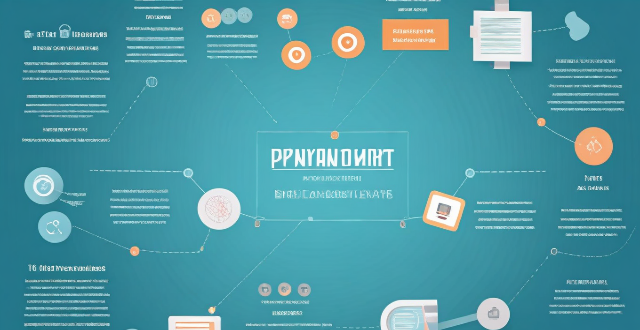Practice Pandemic

What are some best practices for managing a pandemic ?
Managing a pandemic requires a comprehensive approach involving preparedness, communication, and public health measures. Best practices include developing a response plan, stockpiling essential supplies, training personnel, transparent communication, collaboration with health authorities, addressing misinformation, promoting hygiene, implementing social distancing, and encouraging vaccination and testing. By following these practices, communities can better protect their residents and minimize the impact of the pandemic.

What is social distancing and why is it important during a pandemic ?
Social distancing is a crucial measure in pandemic control. It involves maintaining physical distance between people to reduce the spread of infectious diseases. The importance of social distancing during a pandemic includes reducing transmission rates, protecting vulnerable populations, allowing health systems to cope, and facilitating other public health measures. To effectively implement social distancing, governments and health organizations often recommend or mandate measures such as stay at home orders, remote work, closure of non-essential businesses, cancellation of events, and public awareness campaigns. Adhering to social distancing guidelines becomes a community effort towards a safer and healthier environment for all.

What is the current status of the COVID-19 pandemic ?
The COVID-19 pandemic, caused by the novel coronavirus SARS-CoV-2, has significantly impacted the world since its emergence in late 2019. As of September 2023, there have been over 600 million confirmed cases and more than 6 million deaths globally. Many developed countries have high vaccination rates, with over 70% of their populations fully vaccinated, while some developing countries still struggle with access to vaccines. The Omicron variant, first identified in November 2021, has become the dominant strain worldwide due to its high transmissibility. Several subvariants of Omicron, such as BA.4 and BA.5, have emerged, showing increased infectiousness and potential for immune escape. Regional differences exist in terms of vaccination rates, public health measures, and economic impact. Ensuring equitable distribution of vaccines remains a challenge, particularly in low-income countries. The need for booster shots adds complexity to global vaccination efforts. Some countries still enforce mask mandates in certain settings, while others have lifted these requirements. Testing protocols vary widely. Many countries are focusing on economic recovery while managing the ongoing pandemic threat. The shift to remote work has had both positive and negative impacts on various industries and job markets. Looking forward, some experts discuss reaching herd immunity through vaccination and natural infection, while there is an increased focus on improving pandemic preparedness for future outbreaks. The mental health toll of the pandemic is becoming more apparent, with increased rates of anxiety and depression. School closures have led to learning losses, particularly among disadvantaged students.

How can we balance public health concerns with economic recovery during pandemic management ?
Balancing public health concerns with economic recovery during pandemic management involves implementing widespread testing, efficient contact tracing programs, vaccination campaigns, and clear public health messaging. It also requires targeted restrictions, financial aid, adaptive workplaces, infrastructure investments, and building consumer confidence. Long-term planning includes strengthening health systems, fostering economic diversification, investing in research and innovation, and creating emergency funds. Collaborative governance through intersectoral collaboration, global cooperation, and stakeholder engagement is essential for navigating the dual challenge of protecting public health while fostering economic stability and growth during a pandemic.

How has the COVID-19 pandemic highlighted the importance of financial literacy ?
The COVID-19 pandemic has underscored the importance of financial literacy. It helps people navigate job losses, market volatility, personal finance management, long-term planning, and healthcare needs. Financially literate individuals are better equipped to handle economic disruptions and make informed decisions about their money. Seeking support and resources is also crucial during challenging times. Overall, financial literacy is essential for personal resilience and economic stability in the face of global crises like the pandemic.

Is there a standard guideline for wearing PPE during COVID-19 pandemic ?
The text provides a summary of the standard guidelines for wearing Personal Protective Equipment (PPE) during the COVID-19 pandemic. The guidelines are designed to protect healthcare workers, first responders, and other essential workers from getting infected with the virus. The levels of PPE required vary depending on the level of risk involved in different situations, ranging from low risk to high risk. The text also provides best practices for wearing PPE, including hand hygiene, putting on and removing PPE in the correct order, and proper disposal of PPE items.

What lessons can we learn from previous pandemics to improve our current response efforts ?
The text discusses lessons learned from previous pandemics, emphasizing the importance of early detection and response, global cooperation and information sharing, robust public health infrastructure, reliance on science and evidence-based policymaking, and addressing socioeconomic factors that influence pandemic outcomes. Examples from past pandemics such as HIV/AIDS, H1N1, and COVID-19 illustrate these points, highlighting the need for a comprehensive approach to future pandemic responses.

What are some effective ways to practice social distancing in daily life ?
Effective ways to practice social distancing include staying at home as much as possible, keeping a safe distance from others, wearing a mask or face covering in public, washing hands frequently, cleaning and disinfecting high-touch surfaces, and following respiratory etiquette. These practices can help slow the spread of infectious diseases and protect individuals and communities.

What precautions should be taken while traveling during the COVID-19 pandemic ?
The text provides a comprehensive list of precautions to take while traveling during the COVID-19 pandemic. These include monitoring health, maintaining hand hygiene, wearing face coverings, practicing social distancing, using respiratory etiquette, cleaning and disinfecting surfaces, ensuring food safety, organizing travel documentation, choosing safe accommodations and transportation, and staying informed about the latest information on COVID-19. By following these guidelines, travelers can help protect themselves and others from the virus.

What is the best way to practice speaking a new language ?
The article provides a summary of the best ways to practice speaking a new language, which include immersing oneself in the language, speaking frequently and without fear of making mistakes, practicing regularly, focusing on pronunciation and fluency, and learning through real-life conversations. Consistency and practice are emphasized as key factors in improving language skills.

What is the best time of day to practice yoga poses ?
Yoga offers numerous benefits for both the body and mind. The best time of day to practice yoga poses varies from person to person, depending on individual schedules, preferences, and needs. Morning sessions can kickstart metabolism and improve mental clarity, midday practices can relieve stress and rejuvenate the body, while evening yoga can help relax and prepare for sleep. Consistency is key in any yoga practice, so find what works best for you and maintain regularity for optimal results.

How has the pandemic impacted the energy market ?
The COVID-19 pandemic has significantly impacted the energy market by decreasing demand, causing price fluctuations, and accelerating the shift towards renewable energy sources. With businesses and schools closed, people staying home more often, and reduced commuting and travel, there has been less need for energy consumption, leading to a reduction in electricity usage during peak hours. Industrial sources have seen lower energy consumption due to factory shutdowns or reduced production, while transportation sectors have experienced decreased demand for gasoline, diesel fuel, and jet fuel. Residential energy demand has also decreased as people adopted more energy-efficient habits. Energy prices have fluctuated, particularly in the oil and gas industry, with crude oil prices falling sharply at the beginning of the pandemic but recovering somewhat since then. Natural gas prices have also experienced volatility due to declines in demand. However, as economies begin to recover and restrictions ease, energy prices may increase again. The pandemic has accelerated the transition towards renewable energy sources as governments and businesses seek to reduce their carbon footprint and mitigate climate change. Governments have implemented policies aimed at promoting renewable energy development, such as tax incentives for solar and wind projects or bans on new fossil fuel infrastructure. Companies across various industries have set ambitious sustainability goals, including reducing their greenhouse gas emissions and increasing their use of renewable energy sources. This trend is expected to drive further growth in the renewable energy sector even after the pandemic subsides.

How do professional athletes train and practice ?
Professional athletes engage in comprehensive training and practice routines to excel in their sports. Their regimens include physical conditioning through cardiovascular exercises, strength training, and flexibility practices. They also focus on technical skill development through repetitive drills, scrimmages, video analysis, and virtual reality training. Mental preparation is equally important, involving visualization techniques and sports psychology consultations. Recovery and regeneration strategies encompass proper nutrition, sleep habits, and active recovery methods like light exercise and massage therapy. These components all work together to ensure athletes reach peak performance while minimizing the risk of injury.

How has the COVID-19 pandemic affected global health ?
The COVID-19 pandemic has significantly impacted global health by increasing infection and mortality rates, straining healthcare systems, causing mental health concerns, affecting healthcare economics, prompting public health policies and responses, and potentially causing long-term effects.

How effective has the government's pandemic management been so far ?
The effectiveness of the government's pandemic management can be evaluated based on several key factors, including the speed and scope of response, coordination of resources, implementation of public health measures, and communication and transparency with the public. In terms of speed and scope of response, the government's initial response to the pandemic was crucial in determining the overall effectiveness of its management. This includes the timeliness of declaring a state of emergency, implementing travel restrictions, and establishing testing protocols. The allocation of resources such as medical supplies, hospital beds, and personnel was another important factor. The government needed to ensure that these resources were distributed efficiently and equitably across affected areas. As the pandemic progressed, the ability to scale up response efforts, such as increasing testing capacity and contact tracing, was essential for containing the spread of the virus. Effective coordination between different government agencies and departments was vital for a unified and cohesive response. This involved collaboration between health, transportation, education, and other relevant sectors. Partnering with private companies and organizations could help in leveraging their expertise and resources, such as utilizing technology for contact tracing or collaborating with pharmaceutical companies for vaccine development. Working closely with international partners and sharing information and resources could enhance the overall response effort and contribute to global pandemic control. The implementation of public health measures played a significant role in mitigating the spread of the virus. Testing strategies and contact tracing programs were critical for identifying cases and preventing further transmission. The rollout of vaccination programs was essential for achieving herd immunity and reducing the impact of the pandemic. The government needed to ensure equitable access to vaccines and efficient distribution mechanisms. Encouraging public compliance with health guidelines, such as mask-wearing and social distancing, through effective communication campaigns was also crucial for mitigating the spread of the virus. Communication and transparency were key factors in maintaining public trust and awareness during the pandemic. Providing regular updates on the pandemic situation, including case numbers, hospitalization rates, and mortality rates, helped maintain public trust and awareness. Basing decisions on scientific evidence and expert advice demonstrated a commitment to evidence-based policymaking, which is crucial for an effective response. Being transparent about challenges faced during the pandemic, such as supply shortages or delays in vaccine delivery, fostered trust and understanding among the public. In conclusion, evaluating the effectiveness of the government's pandemic management requires a comprehensive assessment of various factors, including the speed and scope of response, coordination of resources, implementation of public health measures, and communication and transparency with the public. By considering these aspects, we can gain a better understanding of how well the government has managed the pandemic so far.

How often should I practice easy yoga poses to see results ?
The article discusses how often one should practice easy yoga poses to see results. Consistency is crucial, and beginners should aim for two to three times per week while intermediate practitioners can increase frequency to four or five times per week. Advanced practitioners may benefit from practicing six or seven times per week but should listen to their body and rest when needed. Quality is more important than quantity, and tips for maximizing your yoga practice include mixing up poses, using props, staying present, and practicing mindfulness.

How often should I practice to see improvement in my golf skills ?
Golf improvement requires consistent practice, and the frequencyGolf improvement requires consistent practice, and the frequency your skill level, goals, and the frequency of your sessions depends on your skill level, goals, and availability. Assess your current skill level and set realistic goals to create a practice plan that includes both on-course and off-course activities. Beginners should aim for at least three practice sessions per week, while intermediates can do two to three and advanced players one or two. Make each session count by focusing on specific goals and tracking progress. Consistency is key, so stick to your practice plan and adjust it as needed based on your progress.

How does the pandemic affect the performance of tech stocks ?
The COVID-19 pandemic has significantly impacted tech stock performance through increased demand for technology, supply chain disruptions, changes in investor sentiment, and government stimulus and regulation. Remote work and learning have boosted tech sales, while e-commerce growth has further driven revenue. However, production delays and component shortages pose challenges. Investor behavior varies, with some seeking safety in tech stocks and others avoiding risk. Government support and regulatory changes also influence the sector's performance. The long-term effects on tech stocks remain uncertain.

How has the COVID-19 pandemic affected the global economy ?
The COVID-19 pandemic has caused a slowdown in production, reduced consumer spending, job losses, disruption of global supply chains, financial market volatility, and required government intervention with stimulus packages.

What role do healthcare workers play in effective pandemic management ?
The role of healthcare workers in effective pandemic management includes diagnosis and treatment, prevention and control measures, contact tracing and testing, vaccination programs, mental health support, and collaboration with other healthcare professionals. Their expertise and dedication are crucial in reducing the spread of the virus and improving patient outcomes.

How has the COVID-19 pandemic affected ESG priorities for businesses ?
The COVID-19 pandemic has significantly impacted businesses worldwide, affecting their operations, financial performance, and strategic priorities, particularly in the area of Environmental, Social, and Governance (ESG) priorities. The pandemic has led to an increased focus on sustainability, a shift towards remote work, health and safety concerns, mental health support, transparency and accountability, and stakeholder engagement. To address these challenges, businesses should conduct a comprehensive ESG assessment, develop a sustainability strategy, implement health and safety measures, offer mental health support, increase transparency and accountability, and engage with stakeholders. By taking proactive steps to address these challenges, businesses can improve their ESG performance and build resilience and adaptability in the face of future crises.

Can sports be considered a form of worship or spiritual practice ?
The provided text discusses the possibility of considering sports as a form of worship or spiritual practice. It explores the psychological and emotional benefits, community building, and mindfulness aspects of sports, suggesting that they offer experiences similar to those found in traditional spiritual practices. While sports may not be seen as a conventional form of worship, they can serve as a secular equivalent of spiritual practice, offering personal growth, connection, and inner peace.

How has the COVID-19 pandemic impacted efforts to address the climate emergency ?
The COVID-19 pandemic has had both positive and negative impacts on efforts to address the climate emergency. On one hand, reduced economic activity and transportation have led to a temporary decrease in greenhouse gas emissions. However, the economic downturn caused by the pandemic may make it challenging for governments and individuals to invest in renewable energy and sustainable practices. Additionally, the diversion of resources towards managing the pandemic has led to delays or cancellations of research projects, conferences, and policy discussions related to climate change. Despite these challenges, the pandemic has presented opportunities for innovation and collaboration. The adoption of digital technologies can enable virtual collaboration among researchers, experts, and policymakers across different regions without requiring physical meetings or travel. Moreover, the importance of global cooperation highlighted by the pandemic can be applied to tackling climate change through international collaboration and collective action. In conclusion, while the COVID-19 pandemic has posed challenges for climate change efforts, it is crucial for governments, organizations, and individuals to continue prioritizing these initiatives alongside public health measures to ensure a sustainable future for all.

How does the COVID-19 pandemic affect girls' education globally ?
In this article, the author discusses the impact of the COVID-19 pandemic on girls' education globally. The main points are as follows: 1. **Increased Dropout Rates**: Many girls have been unable to continue their studies due to lack of access to technology, internet connectivity, and a safe learning environment at home. This has led to an estimated 12 million additional child marriages and 20 million secondary school-aged girls at risk of not returning to school. 2. **Worsened Gender Inequality**: Girls are more likely to be responsible for household chores and caregiving duties during lockdowns and school closures, leading to reduced time and energy for studying and lower academic performance. Additionally, the economic impact of the pandemic has forced many families to prioritize boys' education over girls', further widening the gap in educational opportunities between genders. 3. **Limited Access to Sexual and Reproductive Health Services**: The closure of schools and other essential services has limited girls' access to sexual and reproductive health services, including contraception, pregnancy testing, and counseling. This has led to an increase in unintended pregnancies and childbirth complications. 4. **Reduced Learning Opportunities**: The shift to remote learning has presented challenges for both students and teachers, particularly in low-income countries where resources are scarce. Many girls do not have access to computers or smartphones, making it difficult for them to participate in online classes or complete assignments. Furthermore, the lack of face-to-face interaction with teachers and peers can negatively impact girls' social development and emotional well-being. 5. **Loss of Female Teachers**: The pandemic has also led to the loss of female teachers, who play a crucial role in promoting gender equality in education. Some female teachers have had to leave their jobs to support their own families or care for sick relatives, creating a shortage of qualified female teachers, particularly in rural areas where they are already underrepresented. 6. **Conclusion**: To address these issues, it is essential for governments and organizations to prioritize girls' education in their response efforts, ensuring that they have access to technology, safe learning environments, sexual and reproductive health services, and qualified female teachers. By doing so, we can help build a more equitable future for all children around the world.

How have businesses adapted to pandemic management measures ?
Businesses worldwide have undergone significant transformations in response to the COVID-19 pandemic, including increased adoption of remote work, changes in operations like local sourcing and automation, health and safety measures such as physical distancing and PPE, financial strategies including cost cutting and government aid, enhanced communication and marketing efforts through virtual events and content marketing, and rapid digital transformation with cloud services and data analytics. These adaptations aim to ensure business survival and operation during these challenging times while also presenting opportunities for future growth and efficiency.

How many times a week should I practice yoga poses to see results ?
Practicing yoga poses is an excellent way to improve your flexibility, strength, and overall well-being. However, the frequency of your practice can greatly impact the results you achieve. In this article, we will discuss how many times a week you should practice yoga poses to see noticeable improvements in your physical and mental health. Before determining the ideal number of yoga sessions per week, it's essential to consider several key factors: your current fitness level and experience with yoga, the amount of time you can dedicate to each session, and your specific goals (e.g., increased flexibility, stress relief, muscle building). By taking these factors into account, you can create a personalized yoga routine that suits your needs and helps you achieve your desired outcomes. For beginners, starting with two or three sessions per week is generally recommended. This allows your body to gradually adapt to the postures and prevents overexertion or injury. As you become more comfortable with the practice, you can gradually increase the frequency of your sessions. Once you have established a consistent yoga practice and gained some experience, increasing the frequency of your sessions can help you continue to see progress. For intermediate practitioners, aiming for four to five sessions per week is often beneficial. This allows you to maintain your current level of flexibility and strength while also challenging yourself to try more advanced postures and sequences. Advanced yogis who have been practicing for several years may choose to practice daily or even multiple times per day. This level of commitment requires a significant amount of time, discipline, and dedication but can lead to profound transformations in both physical ability and mental clarity. Regardless of how frequently you choose to practice yoga poses, there are several tips that can help you maximize the benefits of your sessions: set clear goals, mix up your routine, stay hydrated, and listen to your body. By following these guidelines and adjusting your frequency based on your individual needs and goals, you can create a yoga practice that leads to lasting improvements in both your physical and mental well-being.

How important is hands-on practice in personal safety training compared to theoretical knowledge ?
In today's world, personal safety training is crucial to ensure individuals can protect themselves from potential threats and risks. While theoretical knowledge provides a foundation for understanding these risks, hands-on practice is essential for effective training. Hands-on practice provides a realistic experience that allows individuals to apply what they have learned in real-life situations. It also helps develop skills that can be applied across various scenarios, reinforces learning, and builds confidence. Therefore, incorporating hands-on practice into personal safety training programs is crucial for individuals to develop the skills needed to respond appropriately to threats and risks in real-life situations.

How has the COVID-19 pandemic affected the financial markets ?
The COVID-19 pandemic caused significant disruptions in financial markets, including increased volatility, sector-specific impacts, and central bank interventions. Stock markets experienced sharp declines initially, with travel and retail sectors hit hard, while healthcare and technology sectors generally fared well. Central banks cut interest rates and injected liquidity to stabilize markets. Bond markets saw increased activity, and oil prices experienced dramatic swings. Investor behavior shifted towards defensive investing, and economic indicators showed negative trends. The long-term implications of these changes are still unfolding but are likely to shape the financial landscape for years to come.

How has the COVID-19 pandemic impacted global health security ?
The COVID-19 pandemic has significantly impacted global health security by overwhelming healthcare systems, necessitating public health policies such as lockdowns and quarantine measures, and highlighting the importance of international cooperation. The strain on healthcare systems included increased patient loads, shortages of medical supplies, and stress on the healthcare workforce. Public health responses involved vaccination programs, testing and tracing initiatives, and economic challenges due to lockdowns. International cooperation was essential for coordinating a global response, sharing information, and addressing misinformation. The pandemic also highlighted the need for resilient global health systems, sustained investment in public health infrastructure, collaborative research, and technological advancements. Overall, the COVID-19 crisis has prompted efforts to build stronger and more cooperative global health systems prepared for future emergencies.